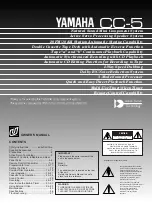
Persistence
Persistence refers to the ability of a load-balancer (or other traffic management solution) to
maintain a virtual connection between a client and a specific server.It is often referred to in the
application delivery networking world as "stickiness" .The persistence of session data is important
when a client and server need to refer to data previously generated again and again as they
interact over more than one transaction, possibly more than one connection. Whenever a client
places an item in a shopping cart, for example, session data (the item in the cart, customer
information, etc.) is created that potentially needs to persist across many individual TCP
connections before the data is no longer needed and the session is complete.
It’s important to note that session persistence is managed by the server application, not
Equalizer. the appliance provides server persistence so that a persistent connection between a
particular client and a particular server can be maintained; this supports a client-server session
where session data is being maintained on the server for the life of the connection. In other
words, whether you need to enable persistence on the appliance depends on the application you
are load balancing.
Equalizers have no knowledge of the fact that the user has placed something in a shopping cart,
logged into a web application, requested a file from shared storage, or made a "post" in a front
end presentation server that has been written to a database. Basically, a "state" has been created
in the load balanced application of which Equalizer is not aware. What the appliance does know is
that a specific client has been load balanced to a specific server in one of its virtual clusters. With
this knowledge, it can track that information and send that client back to the same server they
were connected the first time.
Copyright © 2014 Coyote Point Systems, A Subsidiary of Fortinet, Inc.
All Rights Reserved.
35
Equalizer Administration Guide
Summary of Contents for Equalizer GX Series
Page 18: ......
Page 32: ...Overview 32 Copyright 2014 Coyote Point Systems A Subsidiary of Fortinet Inc ...
Page 42: ......
Page 52: ......
Page 64: ......
Page 72: ......
Page 76: ......
Page 228: ......
Page 238: ......
Page 476: ......
Page 492: ......
Page 530: ......
Page 614: ......
Page 626: ......
Page 638: ......
Page 678: ......
Page 732: ...Using SNMP Traps 732 Copyright 2014 Coyote Point Systems A Subsidiary of Fortinet Inc ...
Page 754: ......
Page 790: ......
Page 804: ......
Page 842: ......
Page 866: ......
















































